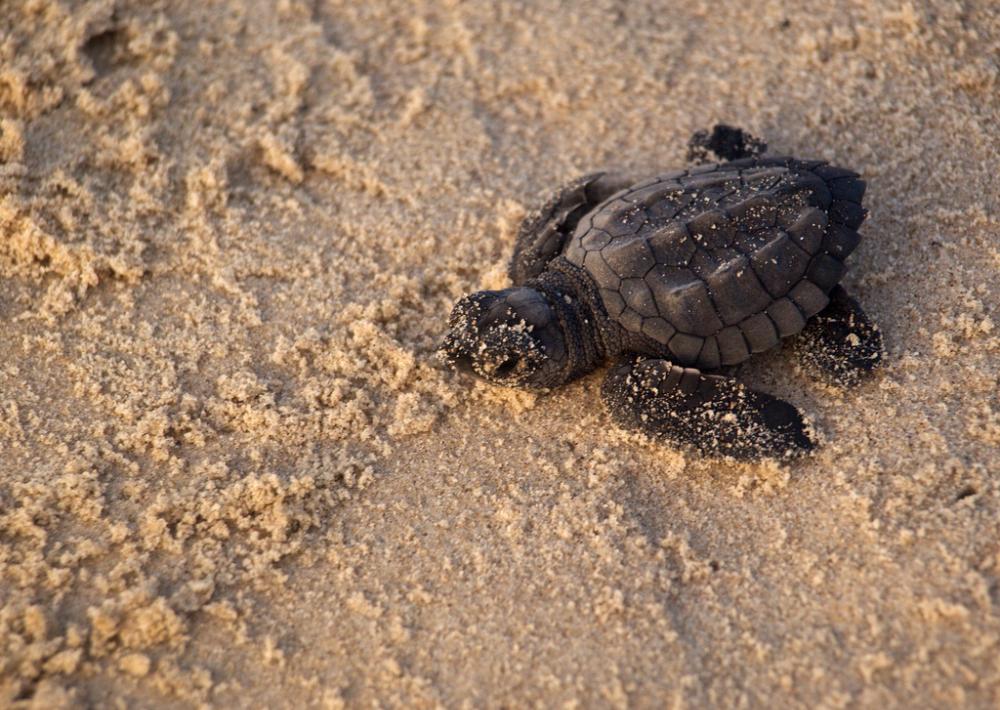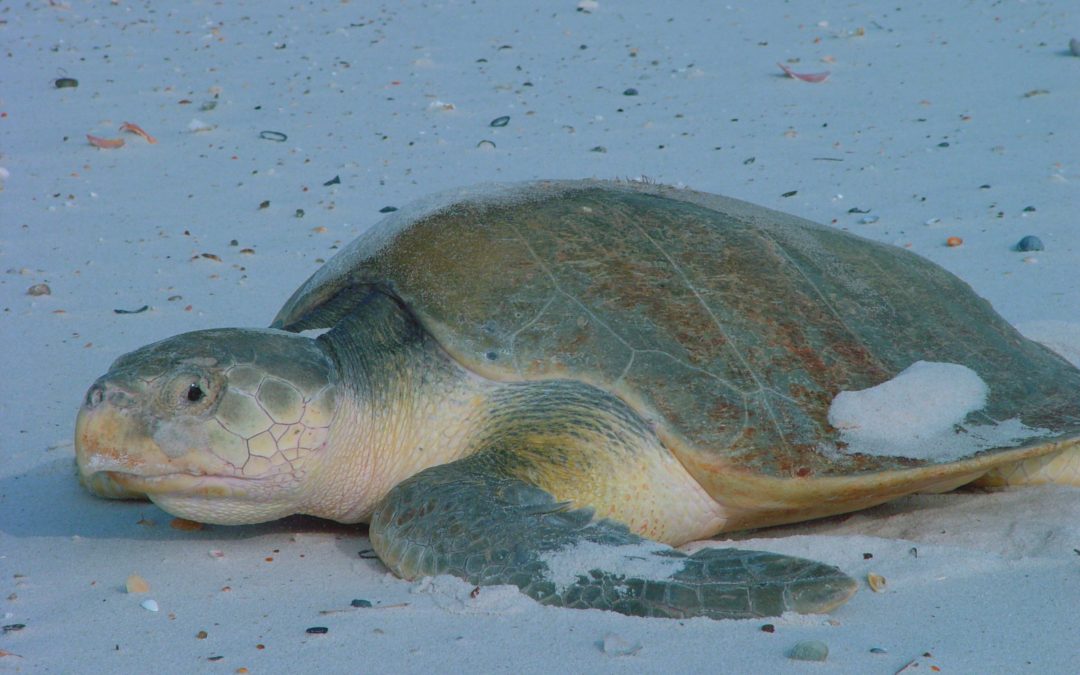The Kemp’s Ridley Sea Turtle is currently the world’s most endangered sea turtle. Can you believe it? There are only between 7,000 and 9,000 nesting females left in the world. And guess what? The reason behind the decline in the population of this species is… humanity. Due to our greed and our selfishness we carelessly let thousands of these turtles die.
The Kemp’s Ridley Sea Turtle is the rarest species of sea turtles and the smallest. It can be distinguished from other species due to its greenish/grey carapace and off-white/yellowish belly.
This species is almost always found in the Gulf of Mexico but has been seen as far north as Nova Scotia. The females always come back to the beaches where they were born to lay their eggs even if that means traveling hundreds of miles. There are only two locations in the world where these turtles nest: Padre Island, Texas and Tamaulipas, Mexico. When they come to nest during the reproductive season they can be seen in very large groups laid across the beaches, this is called arribada meaning “arrival by sea” in Spanish.
The Kemp Ridley usually inhabits shallow, coastal areas where they can stay near the sand and mud on the seafloor. This allows them to have access to their prey which is mainly composed of crabs but also sea urchins, fish, seaweed and sea grass, jellyfish, and squid.
Kemp Ridley Sea Turtles face many, many threats today especially from us humans. Their population greatly declined after 1947 due mainly to accidental capture in fishing gear like shrimp trawls. Today they are considered critically endangered because people over-harvest their eggs and kill them for meat and other uses. Pollution (noise, chemical, water, debris) is another factor that immensely contributes to their decline.
We’ve only very recently addressed the issues of pollution, over-fishing, etc. and the decline of species around the world. But we still don’t do enough to resolve and reverse the issues we have created. If we worked together it wouldn’t take a lot for the world to become a better place, the place it deserves to be. We must not forget that the planet, the animals, the plants were here before us. You can make a bigger difference than you think. It all starts with a small act like recycling and turning a light off when you don’t need it.
Please take the time to make a difference, you won’t regret it.
Facts:
– Scientific Name: Lepidochelys kempii
– Prey: Crabs, fish, jellyfish, small mollusks
– Predators: HUMANS (fishing, hunting, boat propellers, nets, etc.), sharks, shore birds
– Size: 60 – 70 cm; up to 60 kg (130 lb)
– Life Span: up to 50 years (in the wild)
– Status: Critically Endangered
Cover image from Wikimedia Commons

(Smithsonian)

